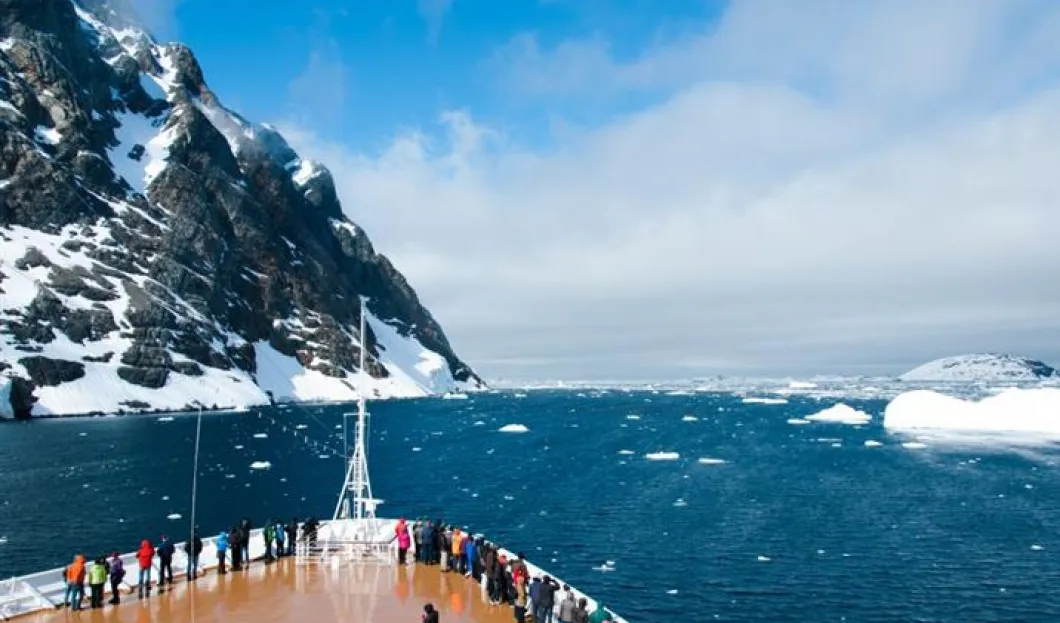
The white continent, and more specifically its peninsula, welcomed 44 367 tourists during the winter of 2016/17, according to the International Association of Antarctica Tour Operators (IAATO). This represents a 15% increase compared to the previous Antarctic tourism season.
Further rise of 5% is anticipated for 2017/2018 – some 46 385 passengers – surpassing the historical record established during the winter of 2007/2008 (46 265 persons). Just for the record, after this season, visitation numbers dropped sharply after the enactment in 2010 of more stringent regulations for vessels wishing to navigate within this zone. Only 20 out of the 49 vessels which had been traveling to Antarctica were able to continue offering cruises in the region, which restricted Antarctica tourism to only 15 000 passengers.
Orders for New Ships
However, the increasing demand has led many ship-owners to acquire new vessels and to place orders for new ships, which has allowed for a significantly increased capacity these last few years. And the trend is set to continue since around thirty new expedition vessels are on order or being planned now. This will basically double the number of ships in the fleet during the next decade.
All of this is being done with capacity constraints in mind since the regulations forbid the disembarkation of cruise ships carrying 500 passengers or more and impose a maximum limit of 100 to the number of people who may go ashore in one location for those ships carrying fewer than 500 passengers.
Increased Air Transfers to the Peninsula
According to the IAATO, the vast majority of tourists (98%) visit the peninsula via the South American port – Ushuaia being the region's principal boarding location. While the number of people who opted to take the voyage by departing from Argentina or Chile aboard small vessels increased by 20% in the past year, the segment of passengers who chose to navigate in these waters aboard cruise ships with more than 500 occupants (no possibility of going ashore) decreased by 8%.
The IAATO also noted another significant phenomenon of the Antarctica tourism: a sharp rise in the direct conveyance of passengers to and from the peninsula by air. It seems that more and more tourists are seeking to avoid the often tumultuous Drake passage which separates the extreme southern most point of South America from Antarctica – a mandatory transit on both departure and return voyages which takes around four days.
Some tour operators are therefore developing cruises which depart directly from the peninsula in addition to offering transit to and from the continent via airplane. For the season which has just ended, some 3 202 persons opted for this solution – which represents 7% of total visitations; more significantly, this represents a 36% increase compared to the previous season and a doubling as compared to the 2012/2013 season.
The number of people choosing this option is sure to grow during the next season (more than 3 400 passengers are expected), a trend which is beginning to worry certain environmental protection agencies who fear the consequences of a too significant development of air links with Antarctica.

The Chinese Are Second
In terms of the nationality of visitors to Antarctica, Americans are still on the first place (33% of visitors, +7% relative to the 2016/2017 season), however the most spectacular rise within Antarctica tourism has been revealed with respect to the Chinese tourists (12% of all visitors), which represents an increase of 25% in the space of one year and which henceforth places Chinese visitors on the second place.
The number of Chinese visitors coming to the peninsula is expected to reach 5,000 this year. Annually, Antarctica is visited by 40 times more Chinese than it was 10 years ago; going up from 99 in the 2005-2006 season to around 4,100 in the 2015-2016 season.
After these two countries, the most dynamic markets in terms of expeditionary cruises to Antarctica are to be found in Germany (9% of tourists, +45% in one year), the United Kingdom (9%, +19%) and Australia (10%, +5%).









